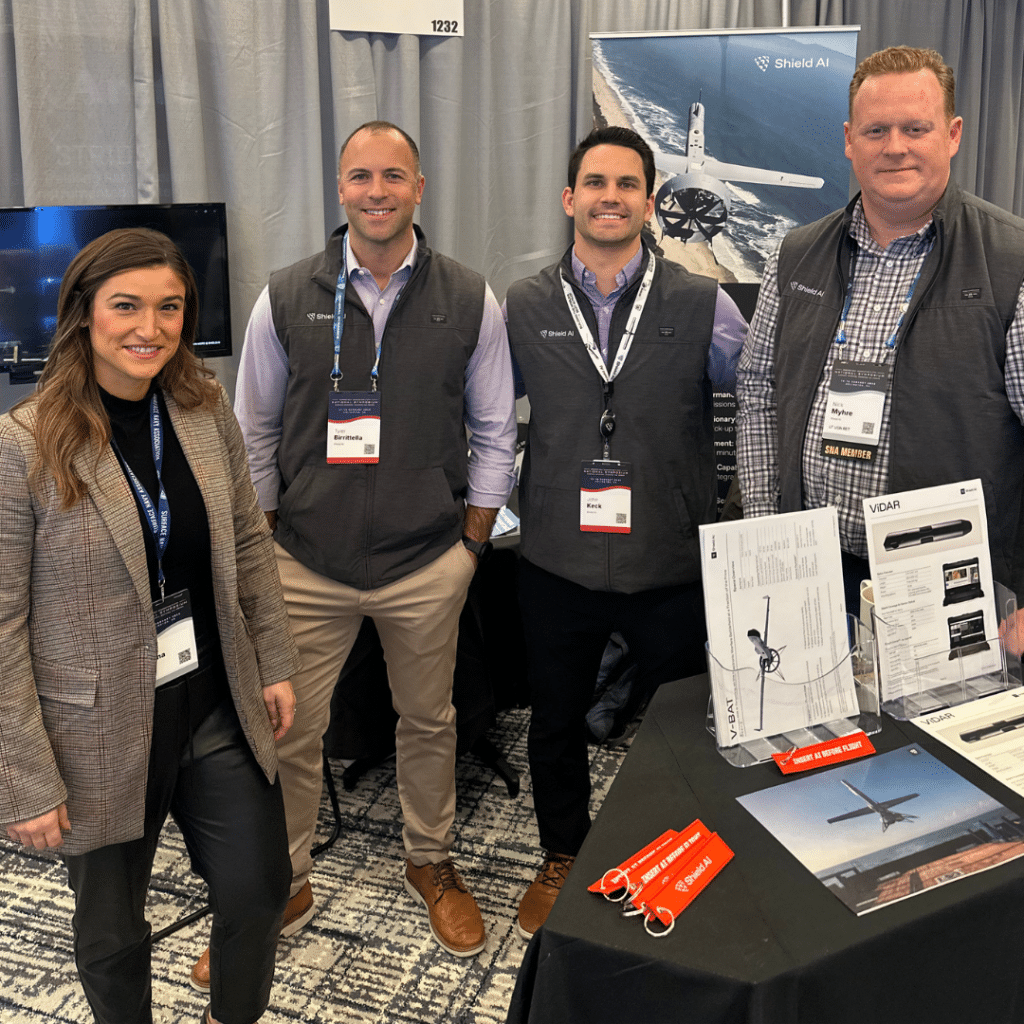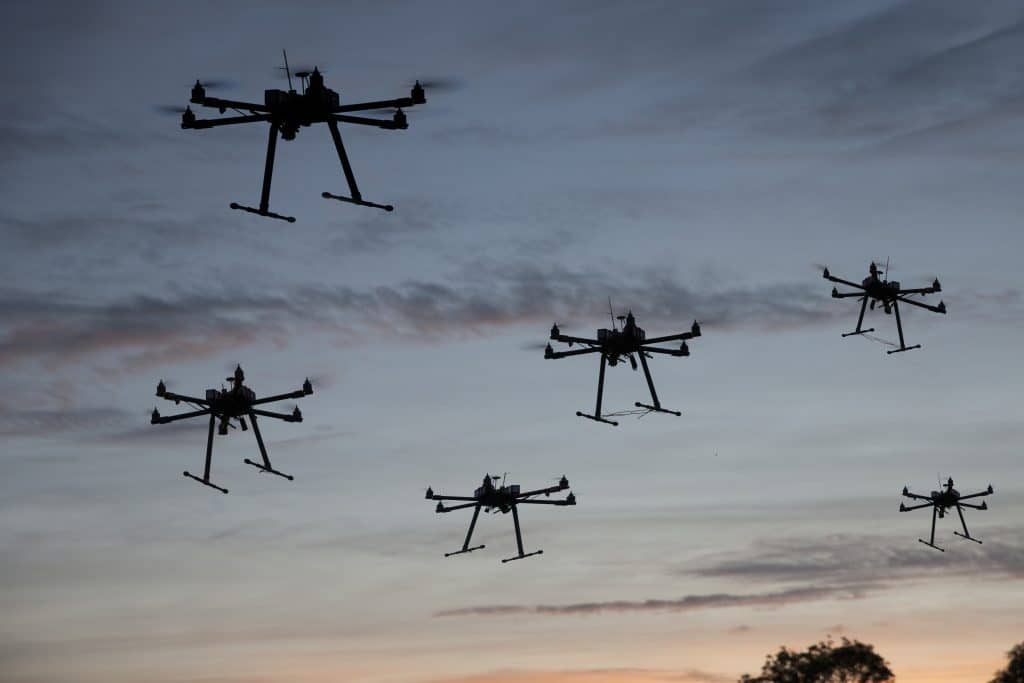Takeaways from SNA 2025
January 17, 2025

This week, the AUVSI team attended the Surface Navy Association (SNA) 37th National Symposium. The event brought together Navy leadership, industry experts, and key stakeholders to explore the evolving demands of maritime operations. While traditional topics like fleet readiness, modernization, and shipbuilding were central to the agenda, the discussions around uncrewed systems stood out as a clear signal of their growing importance to the Navy’s future strategy. These conversations echo the broader movement across defense and industry to harness autonomy, robotics, and unmanned technologies to address complex challenges in an evolving threat landscape.
Autonomy and Innovation: Transforming Maritime Operations
CNO Adm. Lisa Franchetti emphasized that uncrewed systems are no longer aspirational but essential to the fleet, aligning with Project 33 and an ambitious set of “stretch goals” aimed at improving readiness, with a heavy emphasis on robotic systems. Her focus on using unmanned platforms for “dirty, dangerous, or dull” missions reflects the operational versatility and value of these systems in enhancing fleet efficiency and adaptability. Secretary of the Navy Carlos Del Toro stressed the role of autonomy and AI in solving persistent human resource constraints and unlocking new levels of operational capability. These sentiments underscore the need for continued investment and innovation in these critical technologies.
Leadership from N96, the Surface Warfare Division, highlighted the integral role uncrewed systems play in achieving distributed maritime operations. They emphasized how these platforms enhance the Navy’s ability to operate effectively in contested environments and align with broader efforts to modernize the fleet.
Operational Insights: Real-World Validation
Lessons from Ukraine’s innovative use of unmanned surface vessels (USVs) and ongoing Red Sea operations were pivotal in showcasing the real-world impact of unmanned systems. From achieving non-traditional sea denial to demonstrating cost-effective adaptability under combat conditions, these examples highlight the real impact for innovation to disrupt traditional operational norms.
Discussions emphasized an “ecosystem approach” to integrating unmanned platforms across domains, reinforcing the critical importance of collaboration and interoperability in staying ahead of adversarial capabilities.
Speakers also highlighted advancements in counter-unmanned aircraft system (C-UAS) capabilities aboard Littoral Combat Ships (LCS) during operations in the Red Sea. Capt. Matthew Lehmann, program manager for LCS and its mission modules, shared how a software modification to the Surface-to-Surface Missile Module (SSMM) enabled the USS Indianapolis (LCS 17) and USS Minneapolis-Saint Paul (LCS 21) to engage drones using the Longbow Hellfire missile system (Defense Daily). Lehmann called the addition of this capability “an enormous win for counter-UAS capability,” noting its high demand across various platforms, including Arleigh Burke-class destroyers and unmanned systems.
A Balanced Fleet: Maximizing Strategic Flexibility
Adm. Franchetti made it clear that the Navy’s future isn’t about choosing between manned or unmanned platforms but about striking the right balance. The integration of uncrewed systems extends the reach and depth of naval operations while preserving the creativity and expertise of sailors; an approach that is in alignment with modern defense priorities.
Senator Tim Kaine reinforced this vision, declaring that “the future of the Navy will heavily be in the uncrewed space.” His comments spotlight the bipartisan consensus on the strategic advantages of unmanned systems in maintaining persistent maritime presence and addressing budgetary constraints.
Overcoming Challenges: The Road to Full Integration
Panelists candidly addressed challenges in workforce training, system interoperability, and defining operational concepts for unmanned systems. These issues highlight the critical need for collaborative solutions, including standards-based certifications and robust training programs, to enable seamless integration into the fleet.
Skepticism surrounding large USVs from N96 underscores the importance of measured progress, rigorous testing, and clear operational pathways to ensure these technologies deliver on their potential. Building trust across military, legislative, and industry stakeholders remains paramount.
The Big Picture for AUVSI
The conversations at SNA reflect a broader shift across the defense community toward leveraging the unique strengths of uncrewed systems to complement traditional platforms. This evolution is not just about deploying new technologies but about reimagining how the Navy achieves maritime superiority in contested and complex environments.
As the world’s largest trade association supporting the unmanned systems industry, AUVSI is deeply committed to supporting these transformative efforts. From advancing workforce development initiatives to convening industry to accelerate initiatives that ensure interoperability and trust, the focus is on enabling success at every stage of integration. The dialogue at SNA reaffirmed the importance of industry, government, and military collaboration in shaping the next generation of maritime capabilities.
Uncrewed systems are no longer just part of the conversation—they’re redefining the future of naval operations. By addressing challenges head-on and fostering innovation across all domains, the Navy is building a fleet designed for the demands of tomorrow.


